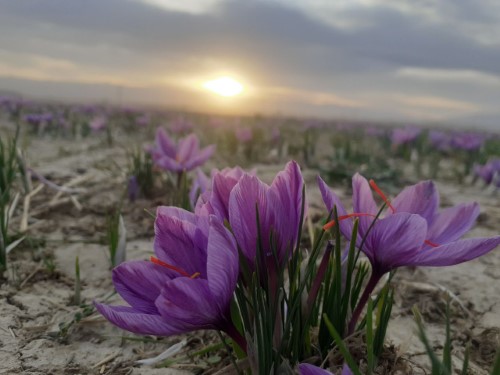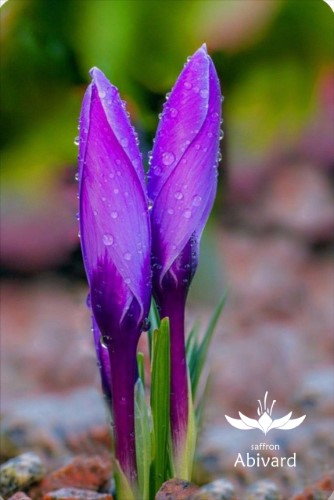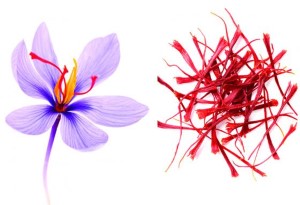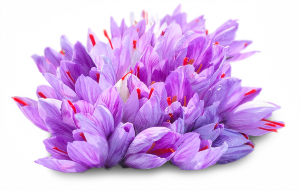Saffron is one of the most valuable herbs in Iran, which captivates the world with its exciting color and aroma and pleasant taste, and with its aphrodisiac properties, softness and beauty to the skin and face and other magical properties, the hearts of He conquered the different tribes and nations of today’s world.
Various theories have been expressed about the origin of saffron with the scientific name Crocus sativus, some of which have legendary roots. For example, some have mentioned the origin of saffron in India, regardless of the history of the culture of saffron cultivation and consumption in Kashmir, its basis is based on the story of the descent of Adam in the land of India. According to such narrations, all fragrant plants and fruits including “saffron” were a heavenly gift of Adam that landed in India.

Some historical evidences and documents indicate that the original habitat of saffron in Iran was the ground and it originated from the slopes of Zagros, especially Alvand areas. Kind The wild saffron with the dialect name “Jo Qasim” which is mentioned in Persian sources as “Karkmise”, has complete similarities with the common saffron plant.
The oldest documents that have reached us about the consumption of saffron are from the period of the kings of Pars, that is, the Achaemenids. We have had the good fortune that the Achaemenians have engraved a long list of all kinds of consumables in the court kitchen (separated by type and quantity) on a bronze column. This inscription is in front of the residence of the king Parsian has been installed.

Polyene (Greek military writer in the 2nd century AD) recorded in his treatise, the materials included in this column and their amounts, including the amount of saffron consumed in a daily load of 2 min (mena or mina: 498 grams) in about a It was kilograms. In this list, there are many other ingredients, including: honey, grape juice, apple extract, several varieties of very soft wheat and high-quality barley flour, almond, pistachio, and sesame oils, as well as animal fat, cumin, black seed, parsley seed, and kartom seed. Is. The mentioned materials can be used in the preparation of all kinds of foods, sweet bread, cookies, tafton and bread. According to Xenophon, after the Koresh, the Persians diversified their food and prepared delicious food.
Poliarchos also spoke about the types of Persian sweets. Among these foods, which were present on Dariush’s table, it has been reported that taftons and saffron-flavored bread flour and sweet cookies were made from very high quality Egyptian and Greek wheat flour and homemade barley with juice and saffron. Tuis, the king of Paphlagonia/Paphlagoni, the ancient region of North Asia Minor, boasted that he spread a table as colorful as the great king (Darius).

Also, Achaemenians used saffron in cosmetic oils. We do not know what the females called edible saffron and its wild species. But it can be assured that the people settled in the Zagros areas, especially the Medes, had a specific name for saffron. Dialectically, this name had a pronunciation similar to the word Karkom or Korkom contained in Pahlavi sources (Persian of the Sasanian era), or the Persian word Karkam meaning saffron. It should be mentioned that the saffron of Khodori was called “Karkmise” in the dialect of the people of Alvand region, until around the eleventh century of Hijri, the first part of which is the word curcum. Undoubtedly, the Sumerians were the first people who entered the gate of human civilization and left written works of them.
This people who live in Mesopotamia migrated to this region from a mountainous region. But their origin has been mentioned in the western areas of the Caspian Sea, and some of Iran and some mountainous areas of Zagros. But the important point is that where did the Sumerians know saffron? Because there is no wild saffron in Mesopotamia. On the other hand, according to some historical and lexical evidence, the origin of the common saffron plant is the Zagros mountains and Elvand slopes. It can be concluded that if the Sumerians really knew the saffron plant and what they meant was the common edible saffron, they must have migrated from Iran’s rich saffron areas. Below are some of the historical documents recorded by historians:
Culture writers of the 11th century of Hijri, first of all Mir Jamal al-Din Hossein Anjavi Shirazi (in 1028), the author of Jahangiri culture, and others after him defined it. For example, Sahib Barhan Khatat has written, Curcumina is the name of a fragrant flower that comes in many colors. Ibn Esfandiar, writer, historian of Mazandaran, kharaj (tax collector) of Mazandaran during the Sassanid era, was ten kharvars for saffron annually. American scientist Bartold Lafer, who published the results of his research on civil cultural relations between Iran and China in 1917, also made a scholarly follow-up about the origin and history of saffron and its names in different languages, and among other things, he came to this conclusion. That :First of all, saffron is one of the native plants of Iran, and in fact, the saffron plant is a car in Iran, and its cultivation has probably started in this land since long ago. Secondly, most likely, saffron onion and the culture of its cultivation and consumption have been transferred from Iran to other parts of the world, especially to India.
While describing the cultural and civil works of the Sumerians (a people who called themselves Black-headed, who lived in Mesopotamia), he says: It is strange that there are still a small number of Sumerian words such as…, saffron,… in the language. . English is used – Sumerians were a people who migrated from a mountainous land (Mazandaran) to Mesopotamia.

